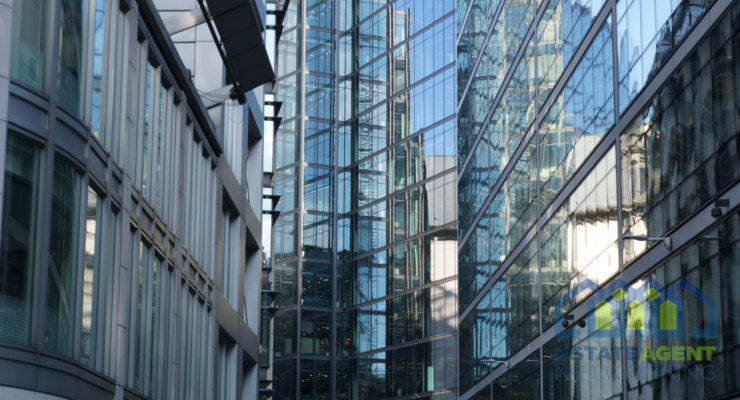The Sustainable Future of Real Estate: Embracing Eco-Friendly Development Practices
The shift towards sustainable real estate is a critical component in the development of a smart city or sustainable city. It’s more than a mere response to environmental challenges; it’s a transformative approach in how we conceive, build, and live in urban spaces. This movement, central to the concept of a smart city or sustainable city, is propelled by an increasing recognition of sustainability’s long-term benefits. These benefits go beyond environmental preservation, extending to the enhancement of economic value and social welfare. As we navigate this progression, it becomes apparent that sustainable real estate practices are not only desirable but essential for a future that harmonizes urban development with ecological stewardship.
Sustainability in real estate is an evolving concept, pivotal in shaping the future of construction and property development. It intertwines ecological, social, and economic factors to ensure long-term viability and minimal environmental impact.
Sustainability within real estate
Sustainability in real estate refers to the practice of designing, constructing, operating, and maintaining properties in ways that conserve natural resources, reduce carbon emissions, and prioritize environmental health. This approach extends beyond mere energy efficiency, encompassing a broader spectrum of sustainable practices such as using sustainable materials and reducing waste.
The importance of sustainability in real estate
Embracing sustainability in real estate is crucial not only for environmental conservation but also for economic and social benefits. Sustainable buildings often have lower operating costs due to reduced energy consumption and waste, leading to financial savings. Moreover, they offer healthier living spaces, which is increasingly becoming a priority for property owners and tenants.
The benefits of incorporating sustainability in real estate
The benefits of sustainable real estate are manifold. Environmentally, it helps in reducing greenhouse gas emissions and conserving natural resources. Economically, sustainable buildings attract a premium in the real estate market, often commanding higher property values. Socially, these buildings contribute to improved health and well-being for occupants, fostering a sense of community and environmental responsibility.
Features of a Sustainable Real Estate
Identifying and understanding the features that constitute sustainable real estate is key to implementing and benefiting from green building practices.
The features that make up a sustainable real estate
Sustainable real estate is characterized by various features, including energy-efficient systems like solar panels, green spaces for improved air quality, and the use of sustainable building materials. These features collectively reduce the carbon footprint and energy consumption of a building, while also promoting renewable energy use and efficient waste management.
Features and their benefits
Each feature of sustainable real estate contributes uniquely to environmental, economic, and social sustainability. Energy-efficient appliances and renewable energy sources like solar panels significantly lower energy costs and emissions. Sustainable materials and green spaces enhance the environmental quality and aesthetic value of the property, thereby elevating property values and occupant well-being.
Potential challenges and solutions in implementing sustainability
Implementing sustainability in real estate does come with its set of challenges, such as higher initial investment costs and the need for specialized knowledge in sustainable development practices. However, these challenges can be mitigated through incentives like tax rebates, grants, and educational programs for real estate developers and building owners. Furthermore, advancing technology in green building materials and renewable energy sources is gradually reducing costs, making sustainable real estate more accessible.
Impact of Sustainability on Real Estate Market
Sustainability is increasingly influencing the dynamics of the real estate market, reshaping how properties are developed, valued, and marketed.
How sustainability influences the real estate market
Sustainability in real estate has a profound impact on the market. It is transforming traditional building practices, pushing the industry towards more eco-friendly and energy-efficient solutions. This shift is not just driven by environmental concerns but also by the changing preferences of consumers who are increasingly aware of and interested in sustainable living.
The growing demand for sustainable real estate
There’s a growing demand for sustainable real estate among buyers, renters, and investors. This demand is fueled by a growing awareness of the environmental impact of buildings, the desire for healthier living environments, and the potential for long-term cost savings through reduced energy consumption and operating costs.
Benefits of sustainable properties for buyers, sellers, and investors
For buyers and renters, sustainable properties offer healthier, more cost-effective living spaces. Sellers and developers can benefit from higher property values, quicker sales, and an enhanced reputation. Investors are increasingly attracted to sustainable real estate due to its potential for higher returns, lower risk profiles, and alignment with environmental, social, and governance (ESG) criteria.
Examples of Sustainable Real Estate Practices
Exploring real-life examples of sustainable real estate practices offers insights into their practical application and impact.
Case studies of sustainable real estate practices
Case studies of buildings that incorporate LEED (Leadership in Energy and Environmental Design) certification or use innovative technologies like smart energy systems and green roofs demonstrate the tangible benefits of sustainable real estate. These examples showcase how integrating sustainable features can significantly reduce energy use and environmental impact while enhancing the living or working experience.
Positive impact created by these practices
These practices have a positive impact on various fronts. Environmentally, they contribute to reducing global greenhouse gas emissions and conserving natural resources. Economically, they often lead to lower utility bills and higher property values. Socially, sustainable buildings improve the health and well-being of their occupants and foster a sense of community committed to environmental stewardship.
Improving Sustainability in Real Estate
Enhancing sustainability in the real estate sector is a multifaceted endeavor, requiring the integration of innovative practices and strategies.
Strategies and practices for improving sustainability in real estate
To improve sustainability in real estate, strategies such as adopting green building standards, investing in renewable energy sources, and implementing energy-efficient designs are essential. These approaches not only address environmental concerns but also optimize the economic performance and social impact of real estate projects.
How these strategies can be implemented
Implementation of sustainable strategies in real estate involves a comprehensive approach. It includes incorporating energy-efficient appliances, using sustainable materials in construction, and designing buildings that maximize natural light and ventilation. Additionally, real estate developers can develop sustainability strategies that focus on reducing carbon emissions and enhancing energy efficiency throughout the building process.
Using a topographical survey for sustainable real estate development
A topographical survey is an integral component of sustainable real estate development by providing in-depth details about its physical features. By mapping out the terrain, including slopes, elevation changes and natural features like waterways and vegetation, developers can make more informed decisions when selecting sites for development or redesign. These data help identify optimal sites for building structures while simultaneously minimising ecological disturbance and protecting natural habitats. Knowledge of topography facilitates efficient drainage systems and water management practices, reducing run-off while increasing conservation efforts. Utilising topographical insights ensures real estate developments meet both practical needs and sustainability goals in their design.
Potential challenges and solutions in implementing sustainability
Challenges in implementing sustainability in real estate often include higher upfront costs, regulatory hurdles, and a lack of awareness or expertise in sustainable practices. Solutions to these challenges involve education and training in green building techniques, government incentives and subsidies, and collaboration between various stakeholders to share knowledge and resources.
Future Trends in Sustainable Real Estate
Anticipating future trends in sustainable real estate is crucial for staying ahead of the curve in this rapidly evolving field.
Forecast of future trends in sustainable real estate
Future trends in sustainable real estate are likely to include increased use of smart technology for energy management, greater emphasis on building resilience to climate change, and more widespread adoption of net-zero energy buildings. There will also be a growing focus on holistic sustainability, considering not just environmental but also social and economic aspects.
Emerging technologies and practices that can enhance sustainability
Emerging technologies such as advanced energy storage systems, AI-driven energy management, and innovative sustainable materials are set to play a crucial role in enhancing sustainability in real estate. Practices like integrating green spaces into building designs, promoting sustainable transportation options, and focusing on community-oriented developments will also gain prominence. These advancements will further reduce the environmental impact of buildings and communities, while also enhancing their economic and social value.
Final thoughts on the inevitable growth and evolution of sustainable real estate practices
The realm of real estate is undergoing a significant transformation, with sustainability at the forefront of this evolution. As we delve deeper into the 21st century, the integration of sustainable practices in real estate is not just a trend but an essential pathway towards a more environmentally responsible and economically viable future.
FAQs
What is sustainable real estate development and why is it important?
Sustainable real estate development refers to the practice of incorporating sustainable practices into the creation and management of buildings and communities.
This includes using sustainable materials, implementing energy-efficient systems, reducing carbon emissions, maximizing the use of renewable energy and creating green spaces. Sustainable real estate development is important because it reduces the environmental impact of buildings, contributes towards lowering greenhouse gas emissions and carbon emissions, and leads to a more sustainable future. In addition, it can also lead to lower operating costs and higher property values.
How is sustainability in real estate measured?
Sustainability in real estate is often measured using a combination of different metrics and certifications. These include, but are not limited to, LEED (Leadership in Energy and Environmental Design), Green Star, BREEAM, WELL Building Standard and others. Additionally, the energy consumption levels, carbon footprint, and environmental impact of the building are also considered. To assess the sustainability, developers often rely on Environmental, Social, and Governance (ESG) metrics, meeting sustainability goals, and achieving renewable energy targets.
What does the term ‘green building’ mean and how does it relate to sustainability?
A ‘green building’ is a building that has been designed, built and operates in a way that minimizes its environmental impact, optimizes the use of resources and provides a healthy indoor environment. It relates to sustainability because the design of the building, the materials used, the energy consumption patterns, and waste generation are all taken into consideration. Architectural measures like ventilation and inclusion of green spaces, along with technical features like solar panels and other renewable energy sources are integral to green building and sustainability principles.
How do emissions affect the real estate industry?
Emissions, particularly greenhouse gas emissions, greatly affect the real estate industry. Buildings are significant contributors to global emissions, accounting for around 40% of global energy consumption. High energy consumption often translates into high operating costs for building owners and tenants, and a higher carbon footprint. Reducing emissions is not only critical for environmental reasons, but also for reducing costs and creating a more sustainable and attractive property.
Conclusion
In conclusion, the inevitable growth and evolution of sustainable real estate practices highlight a pivotal change in the industry’s approach to development and management. Key takeaways from this evolution include:
1. Increased Adoption of Sustainability: Sustainable real estate is moving from a niche market to a mainstream requirement, driven by environmental awareness, regulatory policies, and consumer demand.
2. Economic Viability: The economic benefits of sustainable real estate, such as lower operating costs and higher property values, are becoming increasingly evident, making it an attractive investment.
3. Technological Advancements: Emerging technologies in energy efficiency, renewable energy, and sustainable materials are accelerating the adoption of green practices in real estate.
4. Holistic Approach: The focus on sustainability is expanding beyond environmental concerns to include social and economic dimensions, leading to more inclusive and community-focused development projects.
5. Regulatory Support: Government incentives and regulations are playing a crucial role in promoting sustainable practices in the real estate sector.
As we look to the future, it is clear that sustainable real estate practices are set to become the standard, shaping the way we live, work, and interact with our environment. The industry is poised for a transformation that not only embraces eco-friendly development but also paves the way for a more sustainable and prosperous future for all.









